HNF4α is a therapeutic target that links AMPK to WNT signalling in early-stage gastric cancer
- PMID: 25410163
- PMCID: PMC4717359
- DOI: 10.1136/gutjnl-2014-307918
HNF4α is a therapeutic target that links AMPK to WNT signalling in early-stage gastric cancer
Abstract
Background: Worldwide, gastric cancer (GC) is the fourth most common malignancy and the most common cancer in East Asia. Development of targeted therapies for this disease has focused on a few known oncogenes but has had limited effects.
Objective: To determine oncogenic mechanisms and novel therapeutic targets specific for GC by identifying commonly dysregulated genes from the tumours of both Asian-Pacific and Caucasian patients.
Methods: We generated transcriptomic profiles of 22 Caucasian GC tumours and their matched non-cancerous samples and performed an integrative analysis across different GC gene expression datasets. We examined the inhibition of commonly overexpressed oncogenes and their constituent signalling pathways by RNAi and/or pharmacological inhibition.
Results: Hepatocyte nuclear factor-4α (HNF4α) upregulation was a key signalling event in gastric tumours from both Caucasian and Asian patients, and HNF4α antagonism was antineoplastic. Perturbation experiments in GC tumour cell lines and xenograft models further demonstrated that HNF4α is downregulated by AMPKα signalling and the AMPK agonist metformin; blockade of HNF4α activity resulted in cyclin downregulation, cell cycle arrest and tumour growth inhibition. HNF4α also regulated WNT signalling through its target gene WNT5A, a potential prognostic marker of diffuse type gastric tumours.
Conclusions: Our results indicate that HNF4α is a targetable oncoprotein in GC, is regulated by AMPK signalling through AMPKα and resides upstream of WNT signalling. HNF4α may regulate 'metabolic switch' characteristic of a general malignant phenotype and its target WNT5A has potential prognostic values. The AMPKα-HNF4α-WNT5A signalling cascade represents a potentially targetable pathway for drug development.
Keywords: DRUG DEVELOPMENT; GASTRIC CANCER; GENE EXPRESSION; MOLECULAR BIOLOGY; ONCOGENES.
Published by the BMJ Publishing Group Limited. For permission to use (where not already granted under a licence) please go to http://www.bmj.com/company/products-services/rights-and-licensing/
Figures
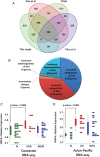
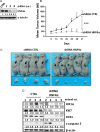
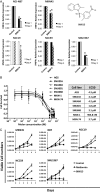
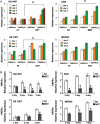

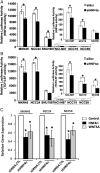
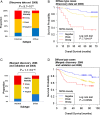
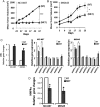

Similar articles
-
HNF4α pathway mapping identifies wild-type IDH1 as a targetable metabolic node in gastric cancer.Gut. 2020 Feb;69(2):231-242. doi: 10.1136/gutjnl-2018-318025. Epub 2019 May 8. Gut. 2020. PMID: 31068366
-
Laminin gamma2 mediates Wnt5a-induced invasion of gastric cancer cells.Gastroenterology. 2009 Jul;137(1):242-52, 252.e1-6. doi: 10.1053/j.gastro.2009.02.003. Gastroenterology. 2009. PMID: 19582886
-
Immunohistochemical staining for P1 and P2 promoter-driven hepatocyte nuclear factor-4alpha may complement mucin phenotype of differentiated-type early gastric carcinoma.Pathol Int. 2009 Jul;59(7):462-70. doi: 10.1111/j.1440-1827.2009.02394.x. Pathol Int. 2009. PMID: 19563409
-
Population, Epidemiological, and Functional Genetics of Gastric Cancer Candidate Genes in Peruvians with Predominant Amerindian Ancestry.Dig Dis Sci. 2016 Jan;61(1):107-16. doi: 10.1007/s10620-015-3859-6. Epub 2015 Sep 21. Dig Dis Sci. 2016. PMID: 26391267 Review.
-
Hepatocyte nuclear factor 4α and cancer-related cell signaling pathways: a promising insight into cancer treatment.Exp Mol Med. 2021 Jan;53(1):8-18. doi: 10.1038/s12276-020-00551-1. Epub 2021 Jan 18. Exp Mol Med. 2021. PMID: 33462379 Free PMC article. Review.
Cited by
-
Transcriptome sequencing identifies key pathways and genes involved in gastric adenocarcinoma.Mol Med Rep. 2018 Oct;18(4):3673-3682. doi: 10.3892/mmr.2018.9370. Epub 2018 Aug 9. Mol Med Rep. 2018. PMID: 30106143 Free PMC article.
-
Metformin: A New Inhibitor of the Wnt Signaling Pathway in Cancer.Cells. 2023 Aug 30;12(17):2182. doi: 10.3390/cells12172182. Cells. 2023. PMID: 37681914 Free PMC article.
-
Structural insights into the HNF4 biology.Front Endocrinol (Lausanne). 2023 Jun 19;14:1197063. doi: 10.3389/fendo.2023.1197063. eCollection 2023. Front Endocrinol (Lausanne). 2023. PMID: 37404310 Free PMC article. Review.
-
Hepatic nuclear factor 4 alpha promotes the ferroptosis of lung adenocarcinoma via transcriptional activation of cytochrome P450 oxidoreductase.PeerJ. 2023 May 8;11:e15377. doi: 10.7717/peerj.15377. eCollection 2023. PeerJ. 2023. PMID: 37180584 Free PMC article.
-
HNF4A expression as a potential diagnostic tool to discriminate primary gastric cancer from breast cancer metastasis in a Brazilian cohort.Diagn Pathol. 2017 Jun 5;12(1):43. doi: 10.1186/s13000-017-0635-2. Diagn Pathol. 2017. PMID: 28583188 Free PMC article.
References
-
- Jemal A, Bray F, Center MM, et al. . Global cancer statistics. CA Cancer J Clin 2011;61:69–90. - PubMed
-
- Parkin DM, Bray F, Ferlay J, et al. . Global cancer statistics, 2002. CA Cancer J Clin 2005;55:74–108. - PubMed
-
- McDonald M, Hertz RP, Pitman Lowenthal SW. Pfizer facts, the burden of cancer in Asia. USA: Pfizer, 2008.
-
- Ferlay JEA. GLOBOCAN 2008, cancer incidence and mortality worldwide. CancerBase 2010;2010.
Publication types
MeSH terms
Substances
Associated data
- Actions
Grants and funding
LinkOut - more resources
Full Text Sources
Other Literature Sources
Medical
Molecular Biology Databases
Miscellaneous
